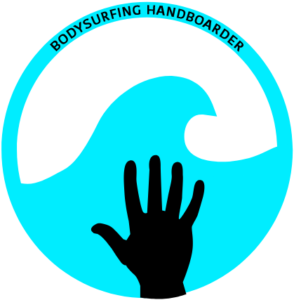Before I bought my handboard, I was worried if it would float in case it slipped off my hand while using it. I would not want to lose such an expensive piece of bodysurfing gear to the watery depths of the ocean so I decided to investigate.
Do bodysurfing handboards float? Handplanes do float because they are less dense than water.
For those who skipped physics class, the rest of this article discusses how a bodysurfing handplane remains above water.
physics of the bodysurfing handboard
The physics behind a bodysurfing
The surface tension of water enables you to travel freely across the top of the ocean. The hydrodynamic forces that occur as a result of the wave allow you to continuously plane across the surface.
You also need to take into account the handboard material and density compared to water. Let’s take a deeper dive into the science of each principle.
relative density
To help determine if an object will float in
To better understand if a
| material | Specific gravity |
| polyethylene | .94 – .97 |
| polypropylene | .90 – .91 |
| fiberglass | 1.62 |
| Epoxy resin | 1.11 – 1.18 |
| Balsa wood | .12 – .15 |
Both polyethylene and polypropylene have a specific gravity less than that of water. This means
The energy of these properties
When you take another glance at the specific gravity chart you will notice that both fiberglass and epoxy resins have a specific gravity greater than that of water. If your handboard contains these materials, which most do, you may be worried that it might sink. Unless the board cracks, this will not happen because of the way it is constructed.
So how can it be possible for something to float if it is denser than water? This is where the average density comes into play.
For example, let’s say your
buoyancy & planing
Whatever you do, do not use your bodysurfing handboard as a floatation device. It is quite simply a planing surface that floats. It needs to float or else you will sink. Neutral buoyancy is ideal for handboarding because you need to be able to penetrate the water so you can swim out to catch some waves.
As I discussed in the previous section, the ability of a bodysurfing
p = m/v
Since the weight of the board per unit of volume is low, it displaces minimal water. Another factor to keep in mind is the coating of the material to keep water from seeping into the board, which would compromise its integrity.
In order for your handboard to plane efficiently, it needs to be buoyant. This is critical because the higher you float the less drag you will experience, which leads to better planing. You will be able to move faster, catch more waves, and ride longer.
surface tension
Have you ever done a belly flop into a pool? If so, you have experienced the strength of water’s surface tension. This is what causes the pain your underside receives as it smashes against the water.
The molecules that make up the chemistry of water are surprisingly strong. It’s so strong that it helps waves to maintain their shape while they barrel towards the sandy shore.
I’m sure now you can understand why water tension has an impact on keeping your
gravity
I’m sure you are aware that without gravity bodysurfing could not be possible. This is the force that pulls you down into the ocean.
for every action, there is an opposite and equal reaction
Isaac Newton
hydrodynamic forces
There is no better feeling than catching that perfect wave. You paddle and paddle and then all of a sudden you are picked up by that whirling wall of water. You feel the rush of water and adrenaline pumping through your veins.
As the wave continues to move and push you quickly across the surface, you feel yourself almost begin to float above the water. What you are experiencing at that very moment is the wave’s hydrodynamic forces.
It’s similar to that of aerodynamics, except it occurs in the water. This is where you will experience lift and drag, which will significantly impact your wave-riding performance. Gravity comes into play here as well. The hydrodynamic forces actually balance out the force of gravity so you can “float” across the water.
my final thoughts
Some of the primary physics behind bodysurfing with handboards have been detailed in this post. A handboard floats because it is less dense than water. Buoyancy is key to giving you enough lift to travel across the water with minimal drag. The surface tension of water helps to keep you afloat so you can enjoy the benefits of the hydrodynamic forces that the ocean can create. Lastly, none of this would be possible without the force of gravity.
I’m sure you never really thought about the science of what is actually happening in the water while bodysurfing. In fact, many of us take it for granted and simply enjoy the ride. Don’t worry though. You’re not alone. I was joyfully ignorant until I became curious as to how I was actually able to ride a wave using my handboard. Therefore I wanted to share my research. Now you know how it all happens!
